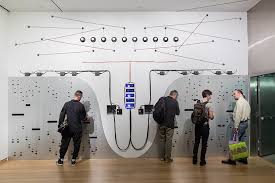
Art is no longer limited to what we see—it’s what we hear, feel, and sometimes even smell. One of the most intriguing developments in contemporary practice is the use of sound as sculpture. These multi-sensory installations use audio as a three-dimensional form, creating immersive environments that challenge traditional notions of space and material.
Unlike visual art, sound art occupies space invisibly. Artists use vibrations, frequencies, echoes, and ambient noise to construct auditory architecture. You don’t just observe these works—you inhabit them. A humming room, a whispering corridor, or a field of hidden speakers can turn silence into structure.
Some installations respond to movement, weather, or even brainwaves. Others are composed using recordings from natural landscapes, urban chaos, or cultural rituals. These soundscapes can evoke deep emotional responses—calm, discomfort, nostalgia—without showing a single image.
Sound sculpture is also collaborative. It often brings together musicians, engineers, architects, and scientists to explore the relationship between sound, space, and perception. Venues range from public parks to underground tunnels, making the experience unpredictable and unique.
This practice encourages us to slow down and listen—really listen. In a world saturated with visuals, sound-based art invites us to engage through our ears, our bodies, and our instincts.
By using sound as a sculptural medium, artists are reshaping how we experience art. They’re proving that silence can be profound, and noise can be beautiful.
